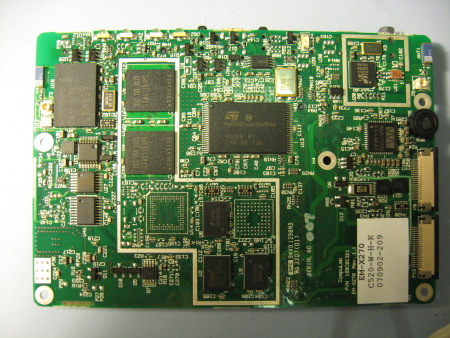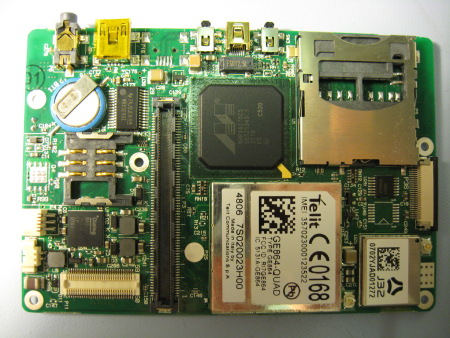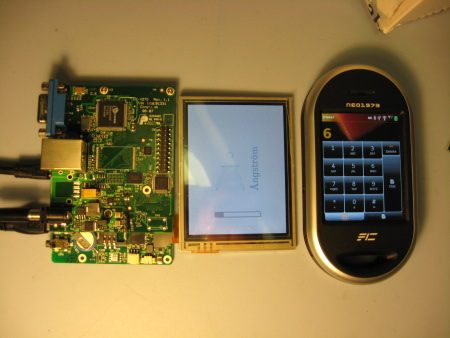The EM-X270 is a full featured computer board from Compulab (http://www.compulab.co.il/x270em/html/x270-em-datasheet.htm) designed for handheld/mobile applications. The board includes options for about anything you might need in a portable system including a PXA270 processor, GSM radio, GPS, Wifi, Bluetooth, Audio, SD/MMC, USB, battery circuitry, and the list goes on. The EM-X270 is designed to give you a big head start in designing a handheld computing device, and can significantly reduce time to market and design costs. This article provides a high level overview of this product, how it might be used, and lots of photos.
EM-X270 Overview
The EM-X270 is a computer board about the size of a display you might find in a typical PDA. While the size is probably a little large to be used in consumer devices like phones and PDAs, it seems like a nice size for slightly larger products used in vertical industries.
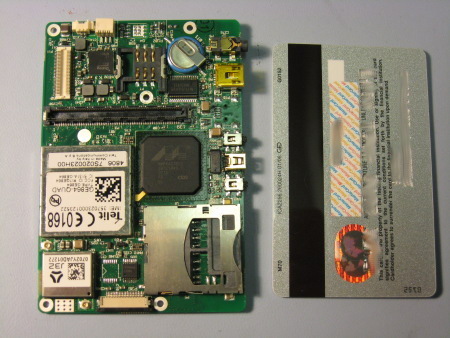
As already mentioned, the EM-X270 includes about all the base features you might need in a mobile computing device. An expansion connector is also included that allows you to easily add custom circuitry to the system. The stack-up between the EM-X270 and an expansion board is shown below:

The EM-X270 differers from most other embedded computer modules in that it is a little more application specified, and quite a bit more circuitry is included in the design such as power supplies, battery charging circuitry, radios, etc.
Why EM-X270?
Why are we interested in the EM-X270? If all you need is a generic handheld computer, there are plenty of options from PDAs to off-the-shelf industrial handhelds. However, if you need a handheld that provides some additional features not typically found in existing devices, then you can use the EM-X270 plus a custom baseboard and packaging to add your high value features. Depending what you need to add, the expansion board can be a simple 4 layer board which is very easy to design and manufacture. All of the complex PCB design and assembly is already done for you on the EM-X270 module. This allows low to moderate volume manufactures design products where they would not otherwise have the time and budget for designing a full custom processor board. Some example applications might be handheld products for the medical, industrial, and test and measurement industry.
Compulab’s pricing model is also very interesting. Compulab will custom build EM-X270 modules with just the options you need. The base price without any extra features (such as radios) is $122 for 1000 pieces.
The EB-X270 Evaluation Kit
Compulab provides a EB-X270 Evaluation kit for getting started with EM-X270 development. Like their other Evaluation klits, is is very full featured and very well done. An extender board is provided that adds Ethernet, JTAG, and several other useful connectors for development.
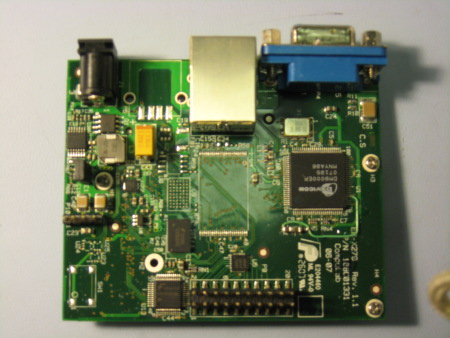
The eval kit also includes all necessary cables, a display, battery, etc.

Software for the EM-X270
Compulab provides software support for both Windows CE and Linux. This includes very up-to-date support for kernel version 2.6.23. EM-X270 machine support has also been included in the OpenEmbedded project for building full featured Linux images. This combination will drastically reduce development costs compared to solutions provided by many other vendors. All too often, single board computer vendors provide an ancient kernel, a hacked up root file system and call it a “Linux BSP”. Actually, any time the term “Linux BSP” is used, you should probably be a bit wary. A much more attractive solution for those of us building products using Linux is for processor and module vendors to say “our products are supported in the mainstream kernel and OpenEmbedded sources”. Compulab is doing it right.
OpenEmbedded provides many interesting options for devices like the EM-X270. One of the most interesting might be the ability to run the OpenMoko software on industrial devices.
Compulab provides a Linux demo image built with OpenEmbedded that runs the GPE Palmtop Environment. The method for loading this image is interesting, and similar to the method I have been using for some time with systems based on the cm-x270 module (http://bec-systems.com/web/content/view/82/9/) in that it used mtd-utils from a running Linux system to erase and write to the NAND flash. The bootloader in the EM-X270 is able to boot a kernel and rootfs directly from a USB Flash disk. This “LiveDisk” image, as Compulab calls it, contains a small utility that programs an image from the USB flash disk directly into NAND flash.
As with any modern Linux based embedded system, there is a lot going on in a very small package. Managing this complexity effectively requires some amount of experience. Stay tuned for future articles that discuss using OpenEmbedded to build software for the EM-X270.
Additional Photos
